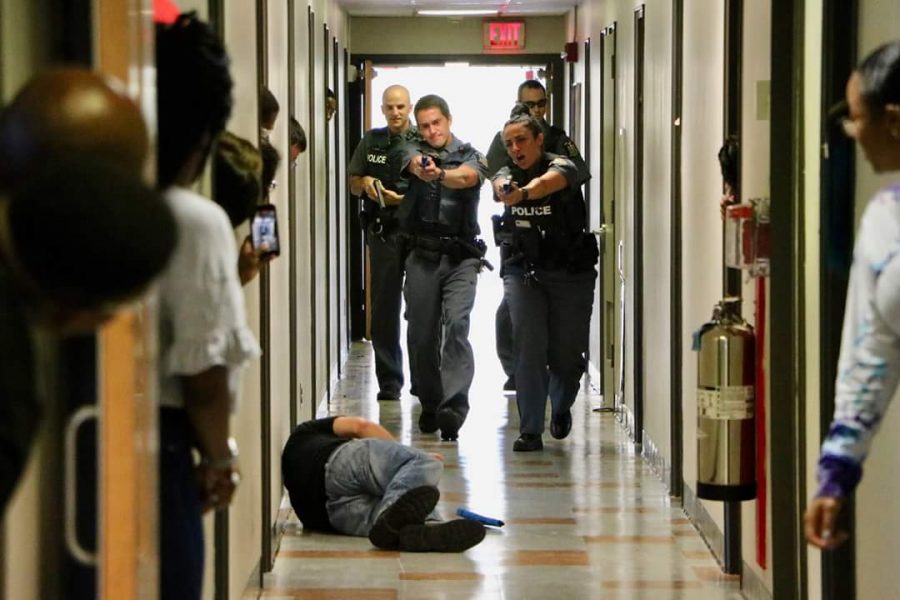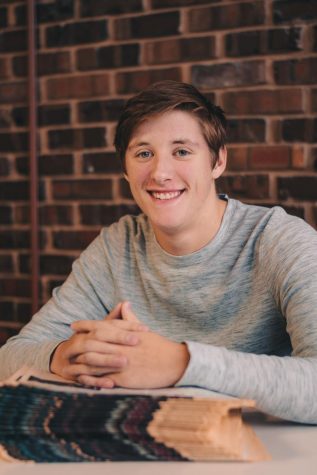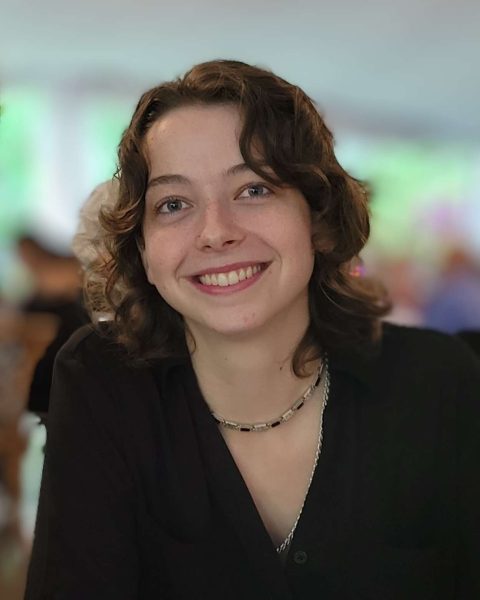Active shooter simulation offers preparedness for emergency
A look into safety measures implemented over the summer
September 5, 2018
According to data from CNN, there had been 23 school shootings where someone was hurt or killed within the first five months of 2018. This averages out to more than one shooting per week.
Some colleges are more vulnerable to school shootings because of their lack of privacy. Colleges such as SUNY Buffalo State, for example, are public campuses. This means that anyone, even non-students, can walk around campus.
College campuses are doing all they can to ensure the safety of their students and faculty. SUNY Buffalo State is one of those campuses that is attempting to prepare students for the worst.
Buffalo State’s Residence Life Office and the University Police Department (UPD) collaborated over the summer to set up an active shooter simulation. Resident Assistants (RAs), Resident Directors (RDs), and Complex Directors (CDs) were able to take part in the simulation.
Being an RA in North Wing, a suite-style residence hall on campus, I decided to take part in the simulation. University police walked us through a pre-training session before the actual simulation.
UPD focused on three main points for how to respond if one were to encounter a shooter: Run, Hide, Fight. Each of these various points has a different priority level.
The first action is “run.” If one were to encounter a shooter, his/her first course of action should be to run to safety. Everyone’s priority is to keep their self safe first.
The second action, if running is not an option, is “hide.” If one cannot escape, he or she should find the nearest open door (not a bathroom) and go inside and lock the door. Make sure to barricade the door, turn the lights off, close the shades and turn your phone on silent. Then, make sure to wait patiently until UPD comes and finds you.
The final action, if no other options are available, is to “fight.” If you have no other choice, grab whatever you can use as a weapon and attempt to fend off the shooter. This option is a last resort and will be more beneficial if there are multiple people attempting to throw off the shooter.
Once we were informed of the proper procedures, we headed over to Neumann Hall for the simulation, which was broken into three parts on three different floors.
The simulation would consist of several UPD officers and a “shooter”. Officers and the shooter used blanks during the simulation and there was no live ammunition in the residence hall.
UPD split us all up by our residence halls and amongst the three floors. Each floor would be actively participating in a different aspect of the simulation.
I started on the second floor of Neumann where the “hide” simulation would be occurring. Once we heard shots, we were to follow the protocol for if we were not able to run away.
As we were spread out across the floor, we were told that the simulation would begin once we heard shots fired. A few distant shots went off and we began.
The couple of people I was with ran to the nearest open door and we locked ourselves in that room. There was so much commotion and hustling to do everything we were told to do.
We pushed dressers and desks against the door, closed the shades, silenced our phones and hid under the beds. Soon, smoke from the blanks being shot triggered the fire alarm.
We sat there as the sound of the fire alarm pierced through everyone’s ears. Five minutes felt like an hour just sitting under the bed in the dark room.
The tension and anticipation of wondering what was going to happen were very nerve-wracking. Soon, this part of the simulation was over, and it was onto the next part.
We then went to the third floor where the “run” simulation would be occurring. The same protocol applied: once we heard shots fired the simulation would start. Our task was to run to the nearest staircase and make our way down to the lobby area.
Patiently waiting in the hallway, we heard the shots go off. Everyone flooded down the hallway to the staircase in an outrageous manner. It was like that of a herd of buffalo running through the plains.
People sprinted for the stairs and hurtled garbage bags and other miscellaneous items in the hallway. There was no order like you usually see for a fire drill. It was nothing but pure chaos.
We all reached the lobby, breathing quite heavily. Now it was time to move on to the final part of the simulation on the first floor.
UPD did not have us act out the “fight” protocol. We were told to just keep that idea in the back of our heads in case an active shooting were to happen on campus.
For the final part of the simulation, we were scattered across the first floor in the doorways of the rooms. We were to just observe the process UPD took when entering a building with a shooter inside.
From one end of the hallway, we saw the shooter turn the corner and fire off a few shots. Then, at the other end, about five UPD officers advanced down the hallway yelling for the shooter to lower his weapon. When the shooter refused, UPD open fired on the shooter. Once he was taken down, the officers cuffed him and searched the rest of the building.
That was all for the simulation. After we were done, we all grouped up in the basement to recap what we thought of the entire simulation.
It was a very eye-opening and quite realistic experience. I would highly recommend this simulation to anyone attending college, whether they are faculty or staff.
With the increased amount of school shootings, it is crucial that people are aware of what to do if they get caught in the middle of such a situation. Being prepared and knowing what to do could possibly help reduce the number of causalities caused by school shootings.





